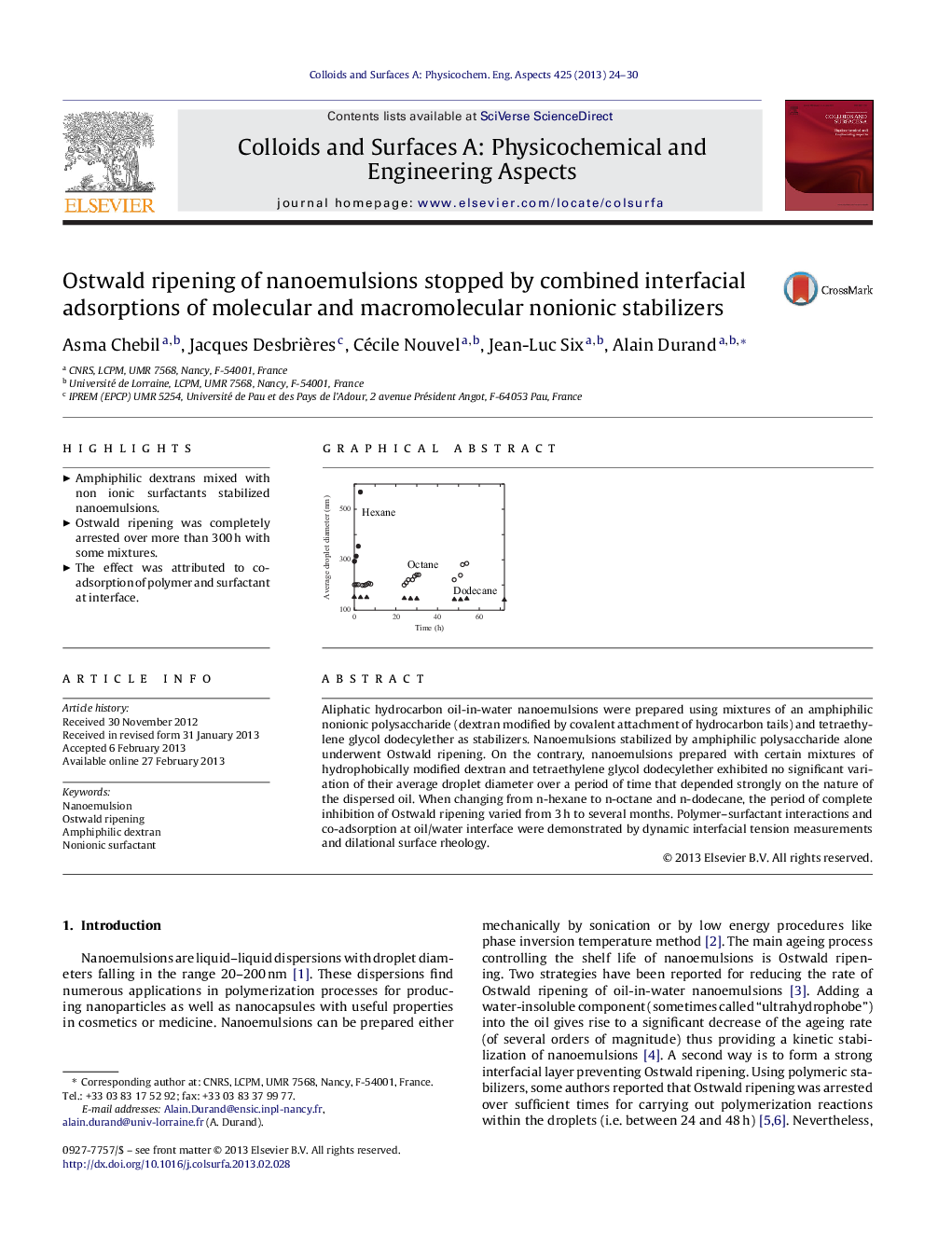| Article ID | Journal | Published Year | Pages | File Type |
|---|---|---|---|---|
| 593594 | Colloids and Surfaces A: Physicochemical and Engineering Aspects | 2013 | 7 Pages |
Aliphatic hydrocarbon oil-in-water nanoemulsions were prepared using mixtures of an amphiphilic nonionic polysaccharide (dextran modified by covalent attachment of hydrocarbon tails) and tetraethylene glycol dodecylether as stabilizers. Nanoemulsions stabilized by amphiphilic polysaccharide alone underwent Ostwald ripening. On the contrary, nanoemulsions prepared with certain mixtures of hydrophobically modified dextran and tetraethylene glycol dodecylether exhibited no significant variation of their average droplet diameter over a period of time that depended strongly on the nature of the dispersed oil. When changing from n-hexane to n-octane and n-dodecane, the period of complete inhibition of Ostwald ripening varied from 3 h to several months. Polymer–surfactant interactions and co-adsorption at oil/water interface were demonstrated by dynamic interfacial tension measurements and dilational surface rheology.
Graphical abstractFigure optionsDownload full-size imageDownload as PowerPoint slideHighlights► Amphiphilic dextrans mixed with non ionic surfactants stabilized nanoemulsions. ► Ostwald ripening was completely arrested over more than 300 h with some mixtures. ► The effect was attributed to co-adsorption of polymer and surfactant at interface.
